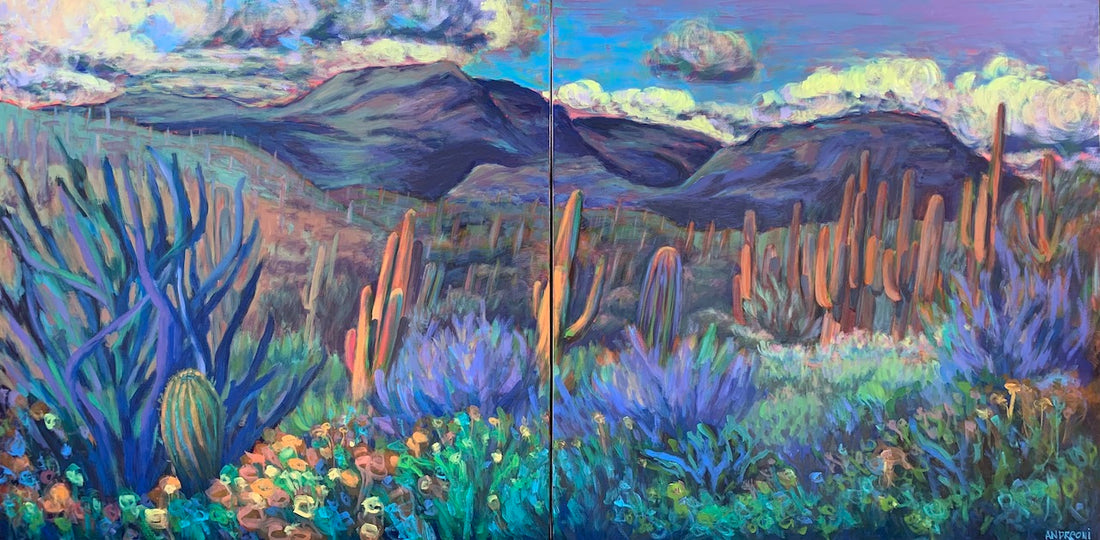
"Value•able" Design Markers
When I was an undergraduate student studying Commercial Graphic Design, there was no Photoshop. (What!?) Everything we rendered was done with Design Markers. I loved those markers! An aspiring art director, I even had an ad idea for them: “Value-able”. To me, my markers had two values. One, they made me “able” to make beautiful images. And two, they were literally a good value since students could afford them. Genius, right? ;)

Being a perpetual student (wander, wonder, create!), I’m back in school again. This time, I’m pursuing my Master of Fine Arts. And this idea of values and what they enable has come back to me. No more pre-made markers. Now it’s oil paints. Mixed by me, by hand, as I paint. It’s called “open palette”. And there’s a lot to learn to master it! And a lot to learn about “values”. I’ve been excited to challenge myself and improve my techniques. Color values are able to do all kinds of things.
So, ready for a little art lesson? Here are some “value-able” things I’ve recently been studying.

"Self-portrait" by Diane Andreoni c. 2022
In “Classical Painting Atelier” by Juliette Aristides, she discusses the purpose of value in art, and its four essential roles within a composition.
First, there’s “value pattern”. This is the way an artist organizes values in a composition to make the art pop!
Second, color values help an artist design the atmosphere of the painting. For example, dark colors feel gloomy, and bright colors happy.
Third, value’s role can help the artist set the painting’s focal point—an area in a composition where the lightest lights and darkest darks converge, and its used to point the viewer to an area in the painting first.
Finally, the fourth role of value is used to create volume or form. To do this, an artist needs to understand how to paint the illusion of light falling across an object, by determining where to paint the lightest light and darkest dark, and the mid-level values in-between. Then, voilà, there’s volume!
After learning more about value’s purpose in art, I understand its purpose more than ever-for the artist and viewer. With value, I can make my paintings stand-out, create moody atmospheres, establish a focal-point, and make 2-D objects look 3-D on my canvas.
Value-able learning to be sure! I’ve come a long way from my markers. (Which I will always still love and appreciate.) With my new knowledge, I’m value-able to make my paintings dance with light, just like I want them to. Yay!

"Paulo the Lover" by Diane Andreoni c. 2020

